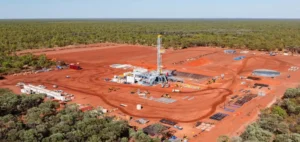Hedge funds continue to increase their influence on the European gas market, exacerbating volatility despite bearish fundamentals.
Data from the Intercontinental Exchange (ICE) show that hedge fund long positions in Dutch TTF futures have reached unprecedented levels, with participation now standing at almost 22% of total positions, far exceeding that of previous years.
This increase in positions was accompanied by notable intraday volatility.
Traders have observed downward pressure on prices in the morning, followed by upturns in the afternoon, often attributed to algorithmic trading strategies.
These fluctuations do not always reflect market fundamentals, but rather are triggered by reactions to geopolitical risks, particularly on the part of US hedge funds.
The role of US funds and intraday dynamics
US-based hedge funds have a significant impact on the European gas market, reacting more to geopolitical news than to local supply and demand dynamics.
This has led to increased volatility, with gas prices sometimes reacting to events that historically would only have influenced oil markets, such as maintenance shutdowns on the Norwegian continental shelf.
Transaction volumes on European virtual trading points rose substantially in 2024, indicating growing participation by investment funds in these markets.
According to an ACER report, traded volumes jumped to 249 TWh/day in the first half of 2024, compared with 178 TWh/day in 2023.
This surge in transactions reflects the strategy of funds seeking to take advantage of seasonal variations (summer-winter) while minimizing the risks associated with taking physical delivery.
Outlook for 2025 and market impact
By positioning themselves massively on contracts for the summer of 2025, hedge funds are anticipating possible tension on gas stocks, despite a currently well-supplied market.
The absence of any major new LNG projects before that date, combined with uncertainty surrounding the transit agreement between Russia and Ukraine, is prompting these players to hedge against unfavorable scenarios, fuelling future market volatility.
This situation, where speculation takes precedence over fundamentals, could continue to have an unpredictable impact on European gas prices, especially as winter approaches.
Hedge funds, by maintaining their long positions, could create more erratic market conditions, increasing the risks for other players in the sector.






















